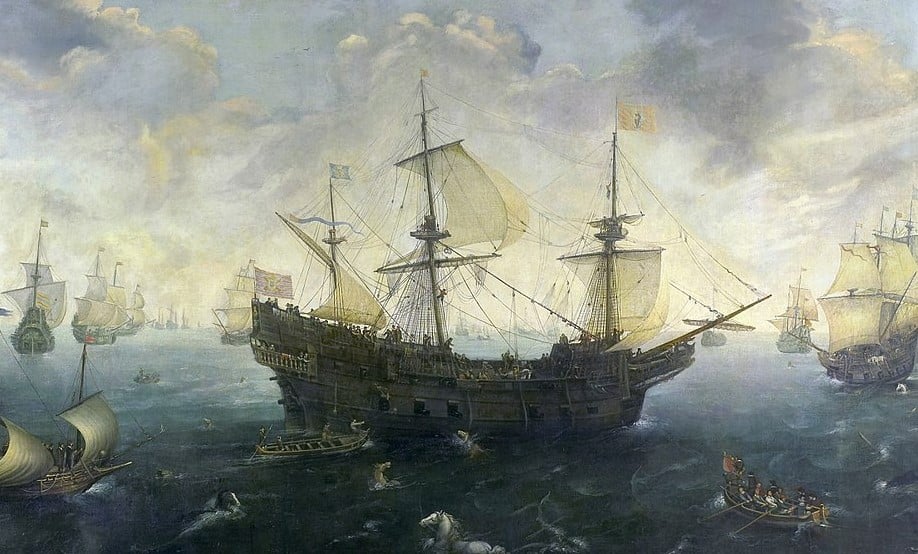
The discovery of a ship that disappeared five hundred years ago and was found in a desert in southwest Africa with gold coins aboard has been one of the most exciting archaeological finds of recent years.
The Bom Jesus (The Good Jesus) was a Portuguese vessel that set sail from Lisbon, Portugal on Friday, March 7, 1533. Its fate was unknown until 2008 when its remains were discovered in the desert of Namibia during diamond mining operations near the coast of the African nation.
When it sank in a fierce storm, it was on its way to India laden with treasures like gold and copper ingots. Two thousand pure gold coins and tens of thousands of pounds of copper ingots were discovered on the Bom Jesus, almost all intact.
It is speculated that the Bom Jesus sank when it was pulled too close to shore in a storm off the coast of Namibia, causing the ship’s hull to collide with a rock and lean over, capsizing the vessel. As the coastline waters receded, the Bom Jesus reemerged in the desert.
The condition that the ship was found in suggests that the storm that caused the shipwreck was especially violent, although an absence of human remains (besides a few scattered bone fragments) in the site suggests that most of the crew on board survived the wreck or died at sea.
Ship discovered in the desert had valuable cargo apart from gold
Dr Noli, the chief archeologist of the Southern Africa Institute of Maritime Archaeological Research, said recently the coastline was notorious for storms so finding a shipwreck was hardly surprising.
However, it was a week into the excavation that a treasure chest laden with gold was found, with the coins indicating it had come from a Portuguese ship that had disappeared in 1533.
“It adds new meaning to the concept of the ship having being loaded with gold,” Dr Noli told News Com, Australia.
Further investigation revealed the discovery of bronze bowls, and long metal poles later found to be canons.
Dr Noli’s team also found a musket which he estimated to be at least 500 years old, and bits of metal which revealed a shipwreck was buried in the sand. It also found compasses, swords, astronomical tools, canons and even a time capsule. Silver coins were also found.
While little is known about the history of the Bom Jesus itself, it is speculated that the ship was part of a class of naval vessels that were larger, more efficient, and more durable than previous Portuguese and Spanish vessels in order to facilitate the longer-distance expeditions carried out by Portuguese fleets during this time.
Based on the contents of the shipwreck, Dr. Noli and other scholars believe the ship was on course for Western India from its home port in Lisbon, Portugal around the southern tip of Africa, a common route for similar Portuguese vessels during this time that carried the same cargo.
Today, the Bom Jesus is the oldest known and most valuable shipwreck ever discovered off the Western coast of Sub-Saharan Africa.
The area where the ship was found was called Sperrgebiet, or “forbidden territory,” after the hundreds of German prospectors who ventured to the region in search of diamonds.
Diamond company DeBeers and the Namibian government still run a joint operation in the area, according to CNN, and the area remains largely out of sight.
The remnants of the shipwreck remain protected by mining security, with limited numbers allowed onto the site. An idea for a museum has been proposed but it remains to be seen whether it will occur.
Related: Top Ten Gold Treasure Discoveries of the Century
See all the latest news from Greece and the world at Greekreporter.com. Contact our newsroom to report an update or send your story, photos and videos. Follow GR on Google News and subscribe here to our daily email!



